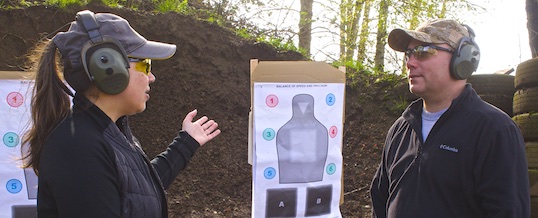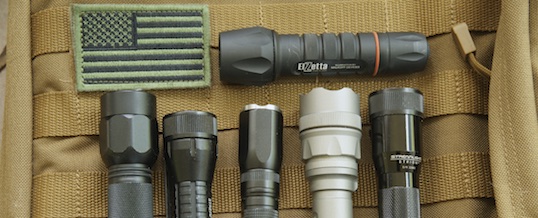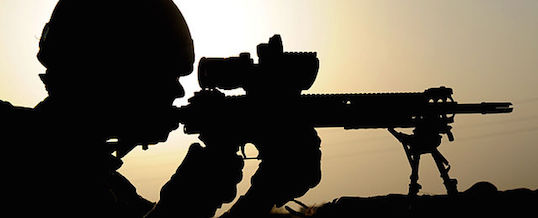
The important role of a training partner in your defensive shooting skill development.
In the defensive shooting world we talk a lot about carry guns, calibers, holsters, belts, and all manner of accessories from flashlights to scopes. A large reason for this focus on things is because they’re easily understood and readily quantifiable; it’s easy to compare things by numbers, charts and graphs.
We pay comparatively little attention to concepts and ideas. They’re harder to understand, sometimes impossible to quantify, and require thought and reflection to properly understand and apply.
There is a combination of a thing and a concept in this field, however, that almost no one talks about: the training partner.
Do you have a training partner? You might think you do, but before blurting out “yes”, understand that my definition of the term and yours might be very different. A lot of people have a friend that they go shooting with, someone who likes shooting and training and all that other fun stuff. You might attend classes together, run through practice drills at the range and good-naturedly insult each other in an effort to “win” the drill that day. For most, that’s a “training partner”.
That’s not the kind of person I’m talking about.
A training partner is someone who can help you develop good defensive shooting skills by serving as your director and, in a way, antagonist. The training partner is a cooperative position, where his or her goal is to work with you but at the same time against you; not by beating you at a drill but by making the conditions under which you might decide to shoot closer to reality than they would otherwise be.
One of the chief goals of practice is to build in your mind the recognition —> recall links for the skills you’ve learned in training. In order to do that you need to reduce as much as possible your anticipation of the need to shoot, the pre-planning and the rote repetition, so that you experience the stimulus in the moment and make the decision to recall and perform the skill. There are various ways to do that, but on the target range and with limited resources at hand the best way is to present targets in such a manner that it forces you to make decisions before, during and after shooting. In short, you need to re-introduce some of the randomness of the “real” world into your practice.
I’m willing to bet that when you go to the range, whether for a class or just to practice, you usually know ahead of time that something needs to be shot; you know in advance the indicators of when you’ll shoot; you know what the target is and what degree of precision the target requires; you’re told how many times you’re going to shoot; and a whole lot more. The essential randomness of an actual defensive shooting is removed, leaving you with little more than a pre-arranged program of choreography. The need to respond, and train your response, to something that you didn’t know was going to happen isn’t addressed. Randomness has been removed.
The training partner’s essential task is to provide some randomness, to make it so that you don’t know what or where or how you need to shoot until the instant that you recognize you need to. He or she serves as the director of the movie you haven’t yet seen and therefore don’t know the ending.
The partner’s job, in essence, is to confuse you sufficiently that you need to evaluate the circumstances and make proper decisions based on what you’ve been told or experienced. From whether to shoot at all to which target to shoot to what degree of precision to shoot, the partner forces you to process information prior to executing your learned skill. Sometimes that processing part requires you to improvise based on skills that you have but that you’ve never applied in the manner needed. In all cases, your partner reduces your anticipation of the need to shoot.
To achieve that goal, your training partner needs to communicate the start of a drill in such a way that you don’t immediately know what, where, or even if you’re going to shoot. He or she also needs to mix up commands so that you don’t know what’s coming next — you can’t predict that since you just did “A”, the next thing will be “B”. Your training partner should leave you guessing whether the next thing is “B”, “C”, “D”, or even “Y”.
There are more things a training partner can do, and a lot of drills can be set up to take advantage of the presence of that partner. For ideas, I suggest you check out my latest book, Handgun Training: Practice Drills For Defensive Shooting which touches on partner drills and what the partner is to do and say during those drills.
What should you look for in a training partner? Who should you ask? Believe it or not, you don’t necessarily need to look for another shooter! The training partner only needs to understand the concepts that I’m talking about and how to utilize them to your benefit. If, for instance, the target you’re using has large and small options, colors, shapes, numbers, and perhaps letters, you explain to your partner that he’s to call those options at random: mixing sizes, for instance, so that you’re always needing to evaluate the amount of control to apply to the gun in order to get your hit. The sizes can be mixed in such a way as to reflect that most defensive shootings are aimed at the upper chest, so a target of that approximate size gets called more often than much smaller ones. In this way you never really know what you’re going to shoot until the need to shoot is presented.
It doesn’t take another shooter to understand that, but it does take someone who’s not afraid to be a little devious! If your partner is another shooter you’ll both get good practice opportunities as you can take turns, but if not it just means that you get in more practice for any given time at the range.
Your partner also needs to understand how to handle you. This type of training is not always kind to fragile egos, and I’ve seen many instances where good (in the conventional sense) shooters just go to pieces when their well-polished skills deteriorate under more realistic demands. This is because a skill practiced in isolation, outside of the context in which it’s actually used, can be perfected to the point that the reason for the skill becomes lost. When that person is put into an unfamiliar exercise or under unpracticed circumstances they shoot much closer to their real ability — and that dichotomy between expectation and reality can cause anger and even safety issues.
(I once watched a veteran SWAT officer, a man with thousands of hours of high-level training and the training officer for his department, unintentionally fire a round into the ground just a foot or so in front of his own toes. Despite being a “good shooter”, the realistic changing nature of the drill had put him far out of his comfort zone — and he was ill-equipped to deal with the feelings which resulted. He was angry at his reduced performance and let that anger affect his gunhandling. It can happen to anyone.)
Your partner needs to be able to recognize when you’re getting angry or frustrated and dial back the intensity or even suggest a break. That’s important for your safety, of course, but even more important to your learning. If you’re fatigued, either mentally or physically, you’re not going derive much value from your practice session.
This is really just scratching the surface of the importance of the training partner. Your training partner isn’t someone to have fun with or compete with for who buys the first round; he or she is there to help you practice the skills you’re likely to need in a defensive shooting incident, under conditions which are as close as possible to how they’ll be used. It’s a tough job that requires a lot of thinking, but if you’re serious about your defensive shooting development it’s someone you need with you every time you hit the range.
Do you have such a partner? If not, start thinking of likely candidates!
– Grant Cunningham
- Posted by Grant Cunningham
- On December 7, 2015



